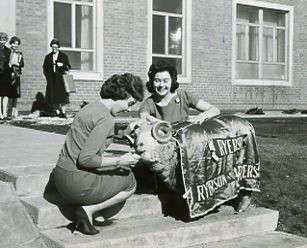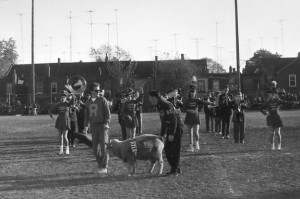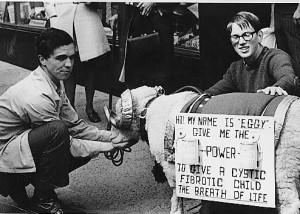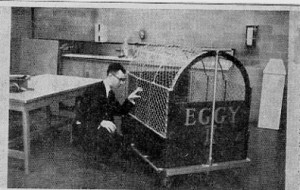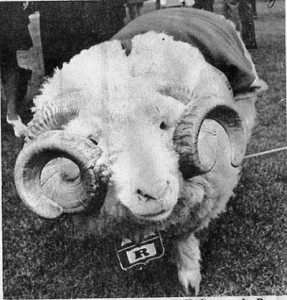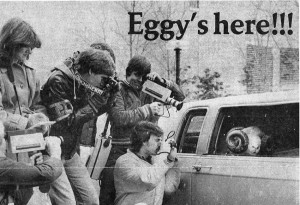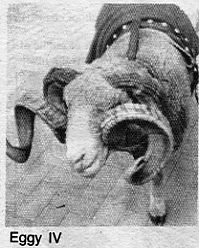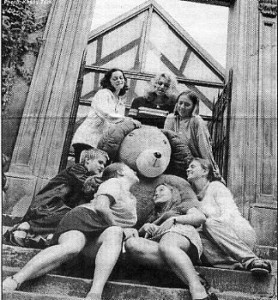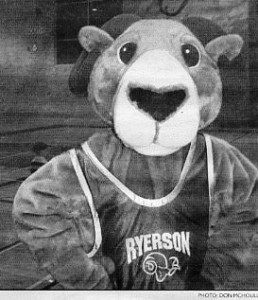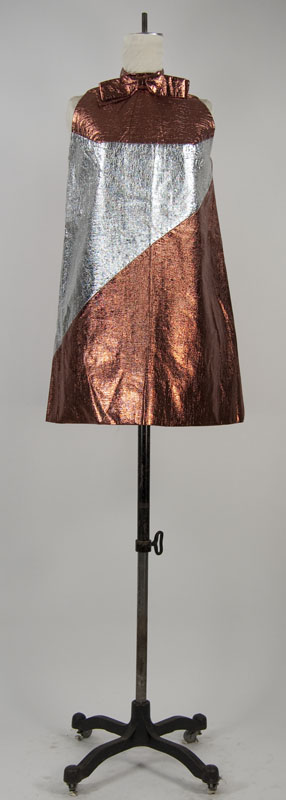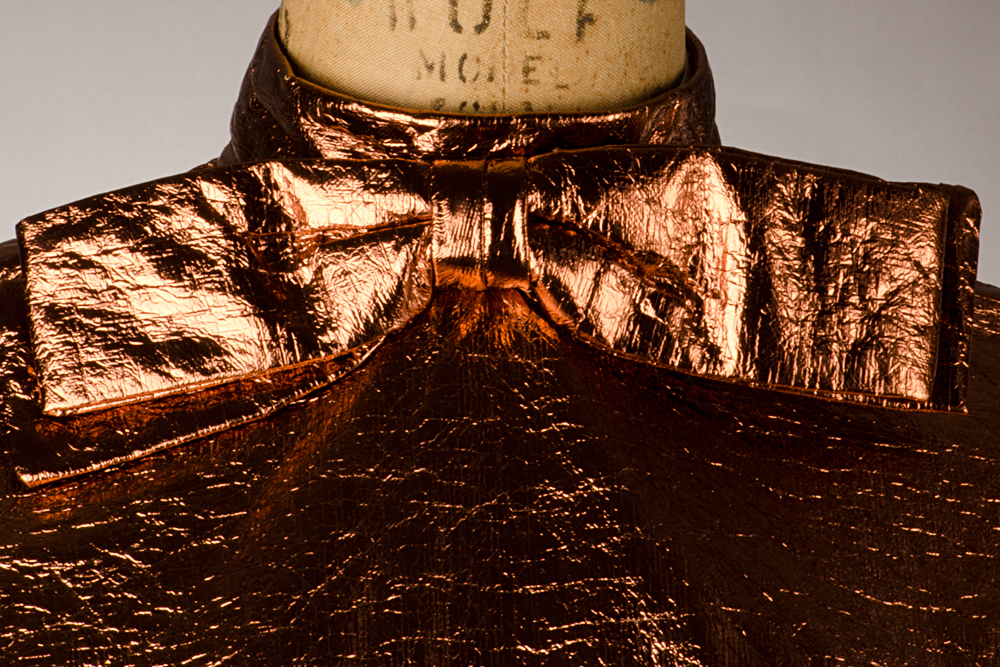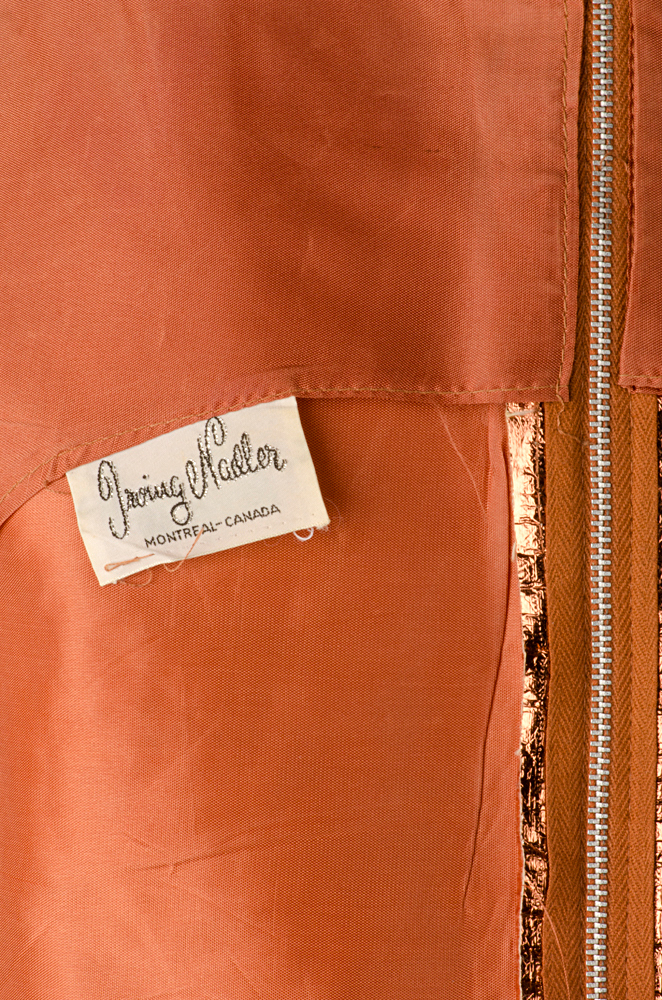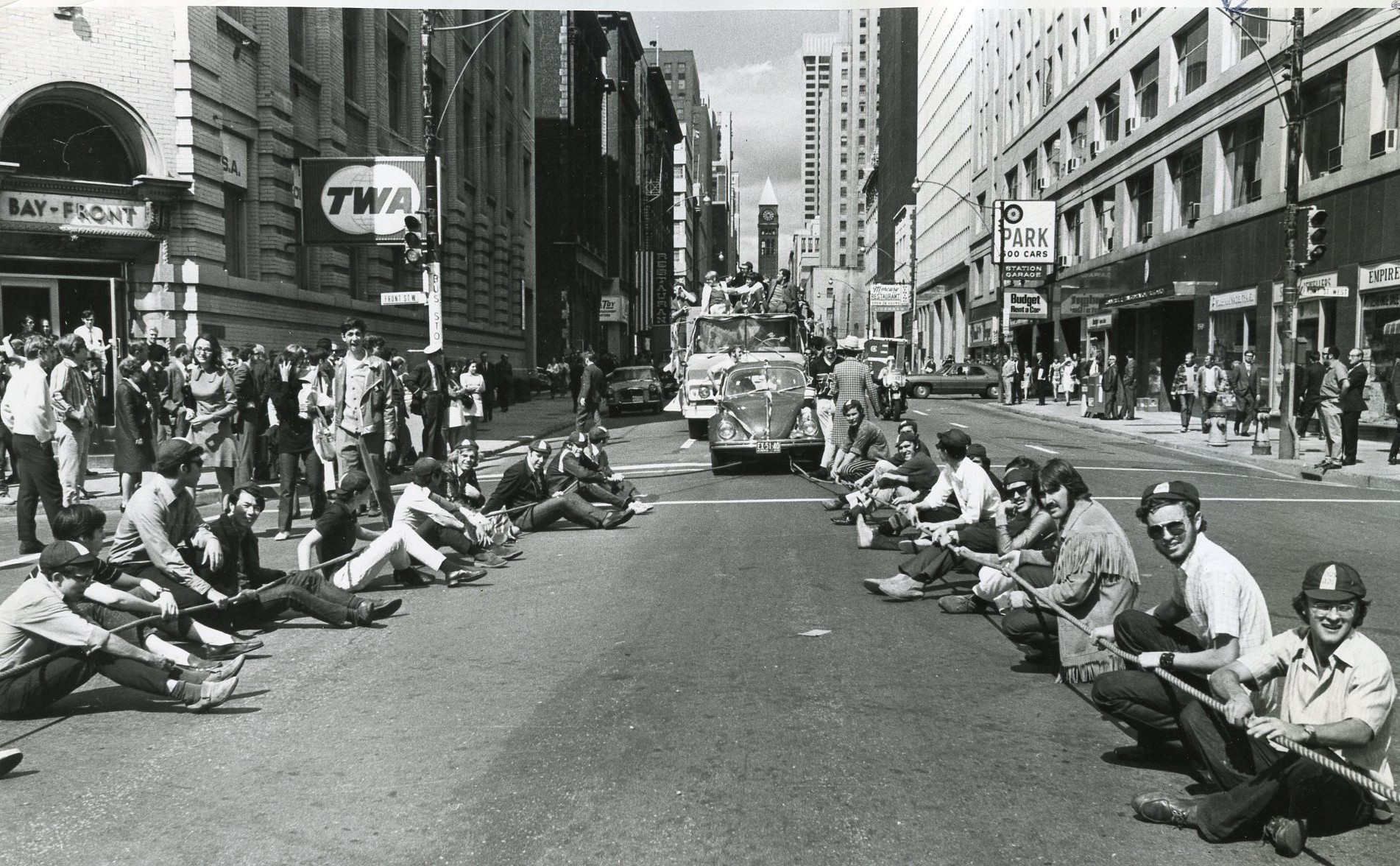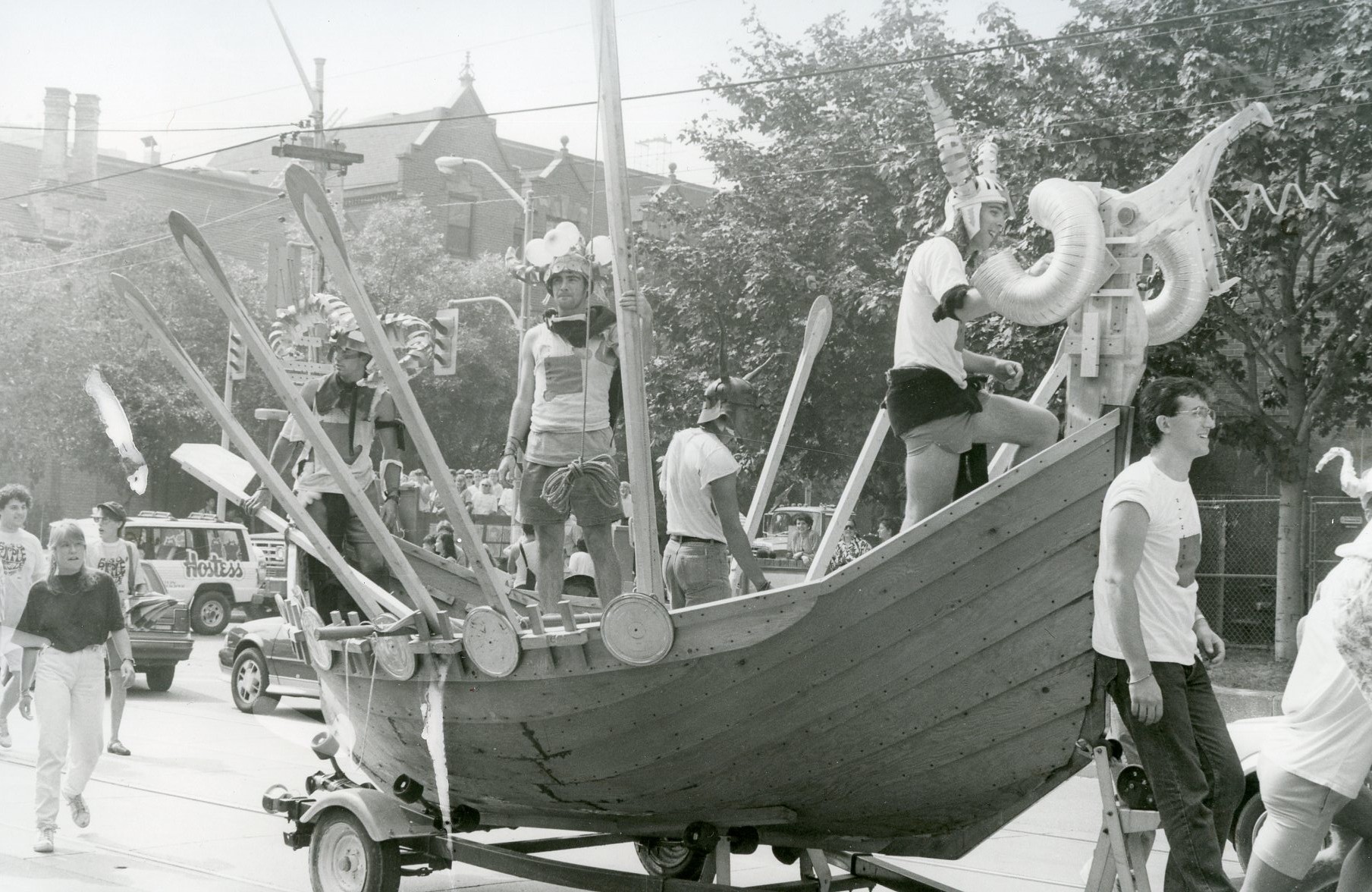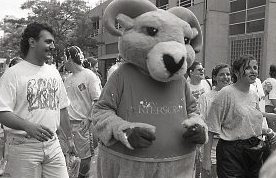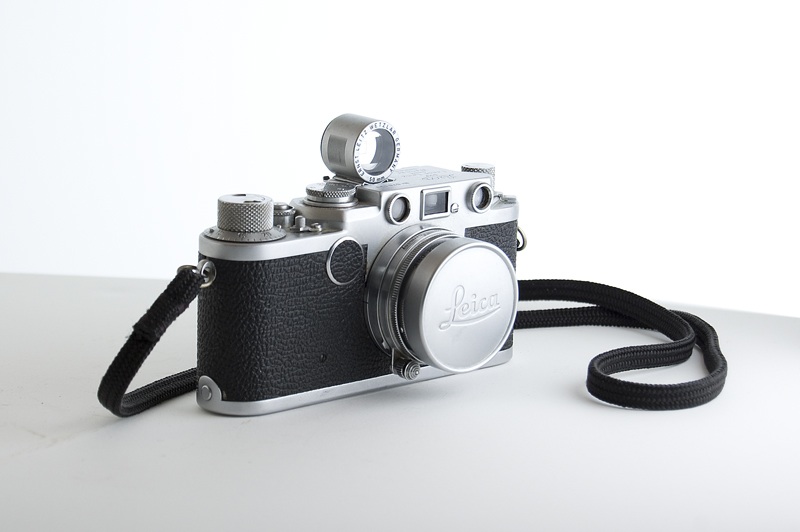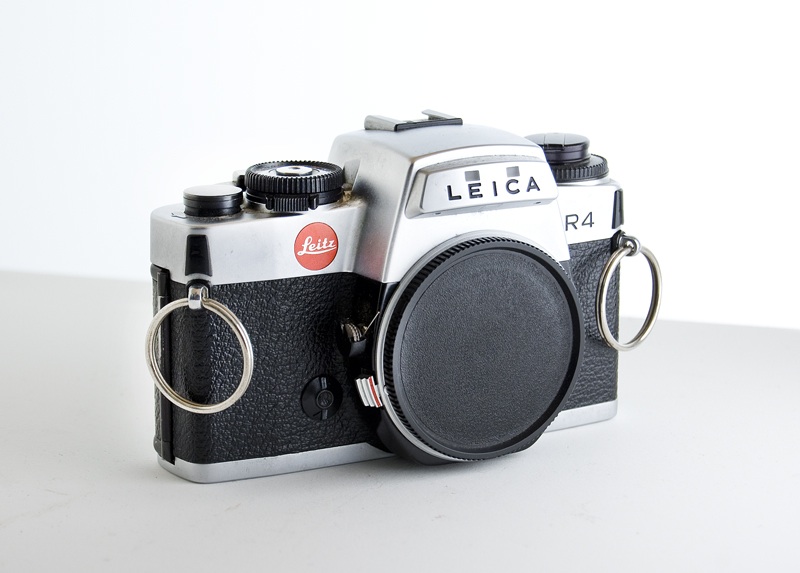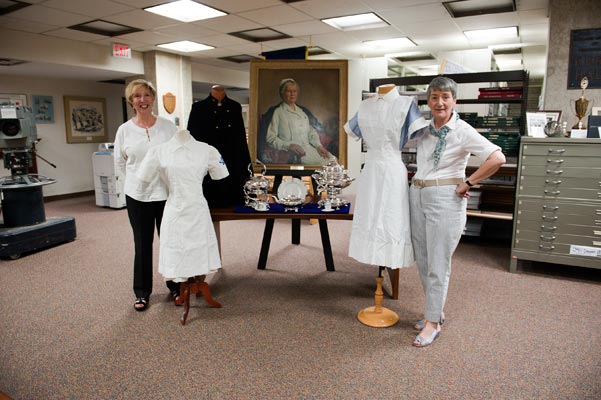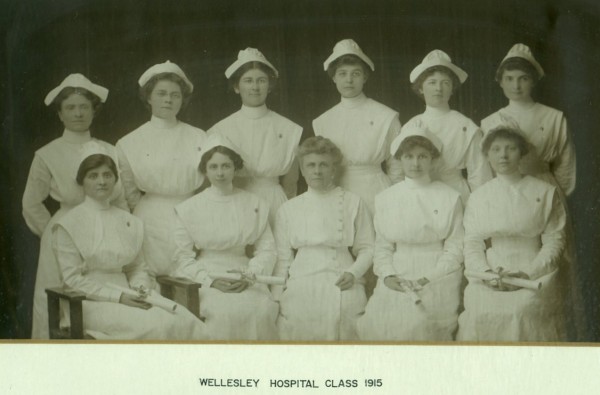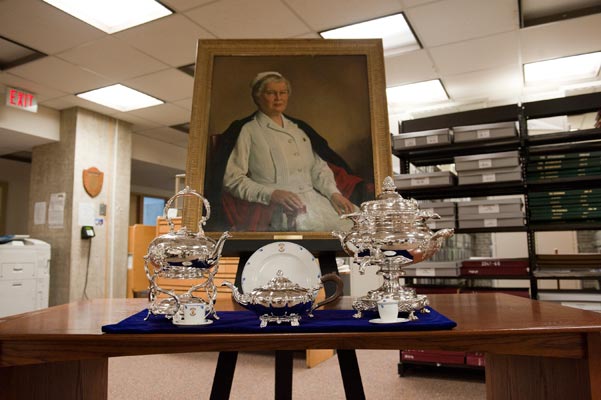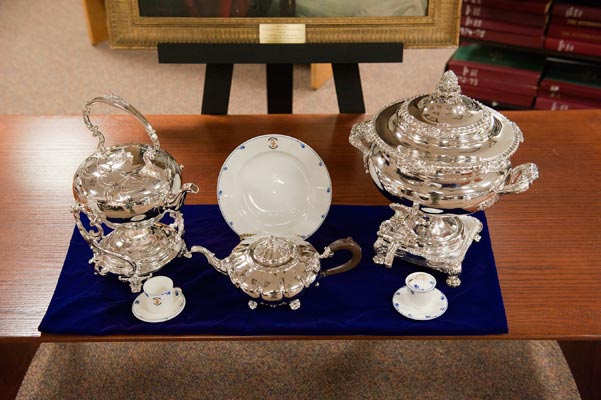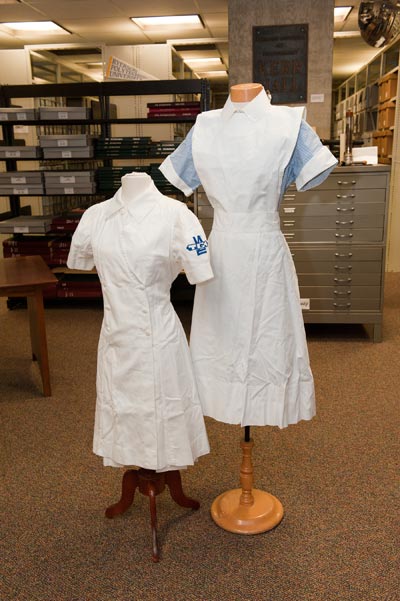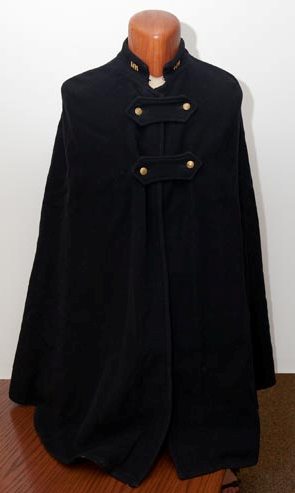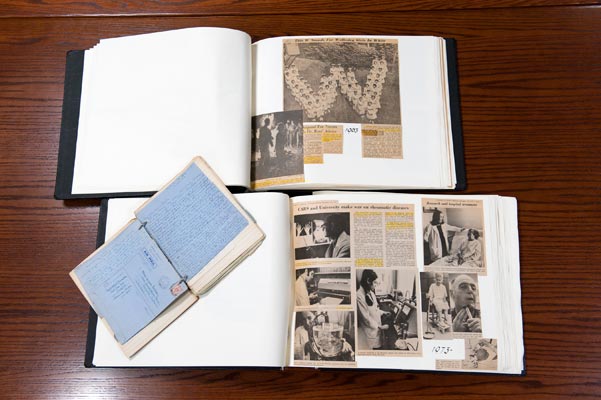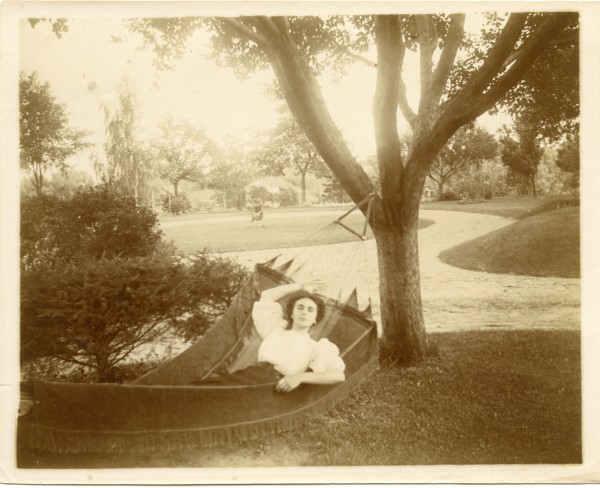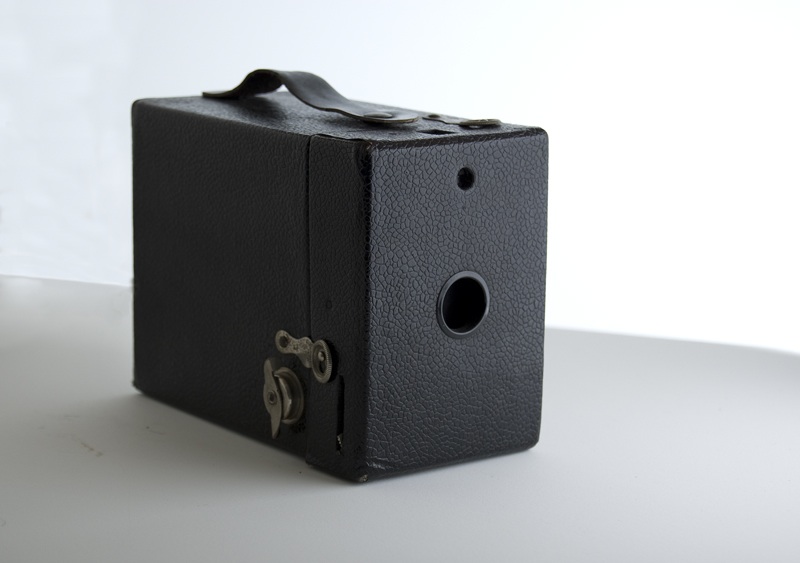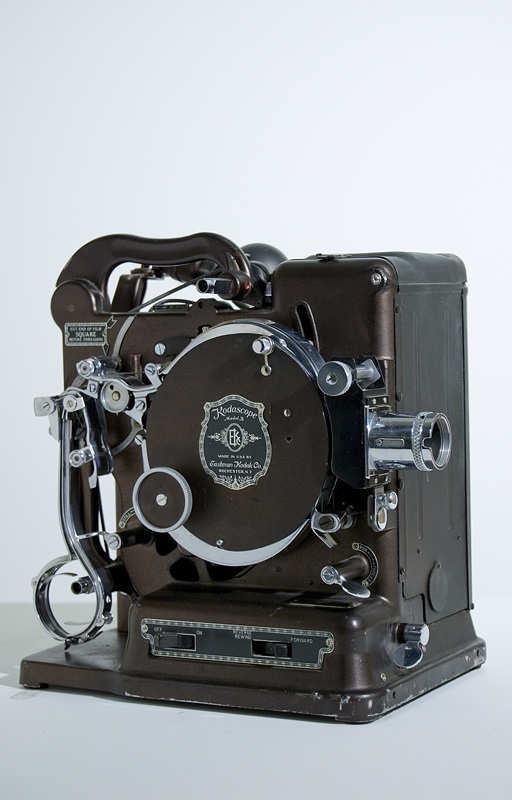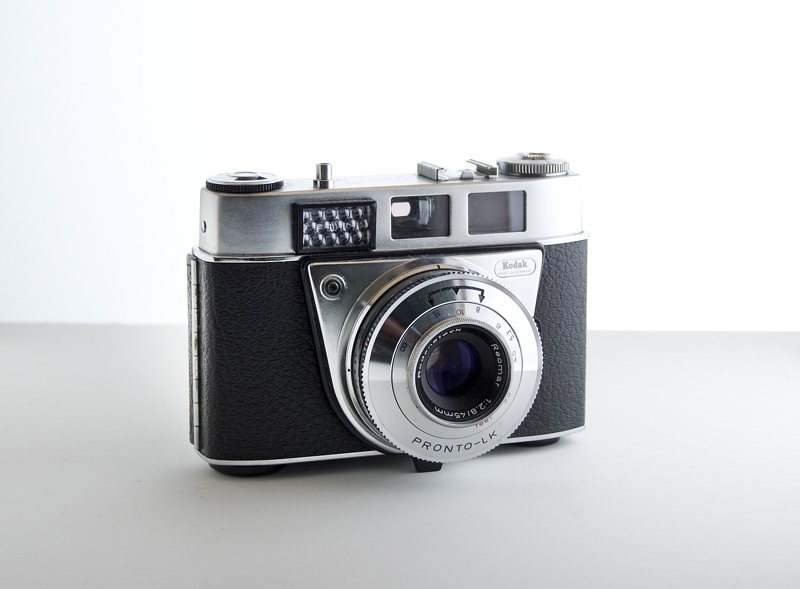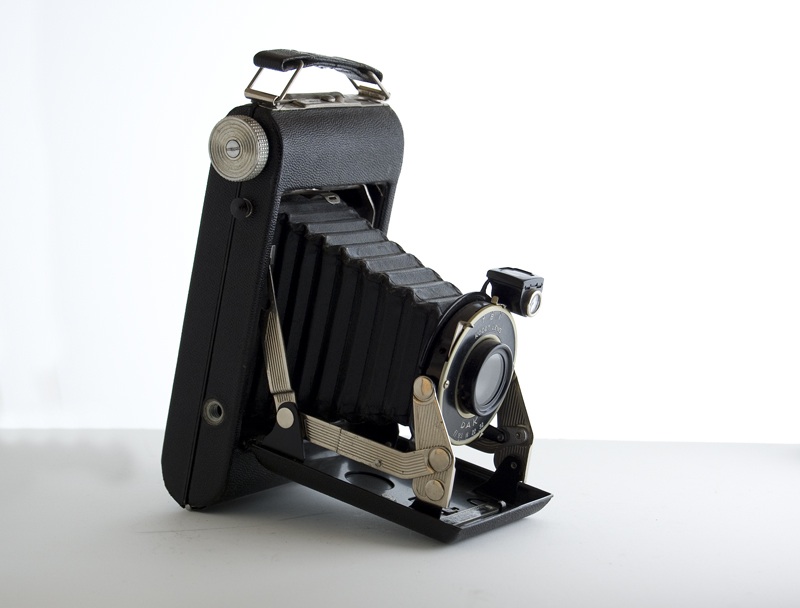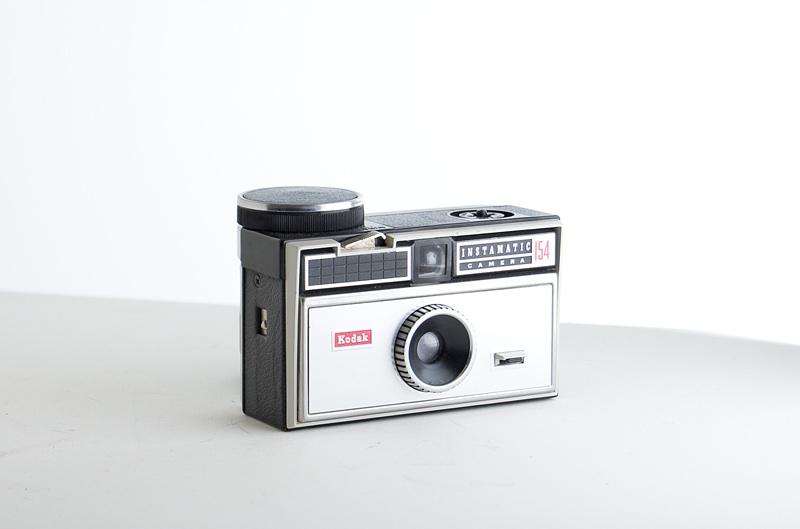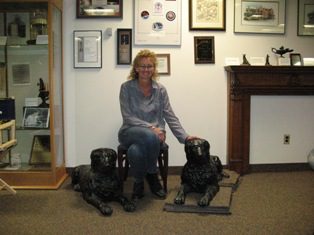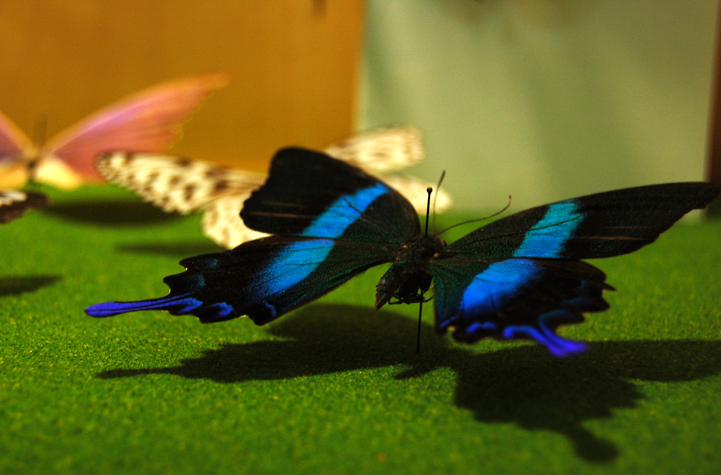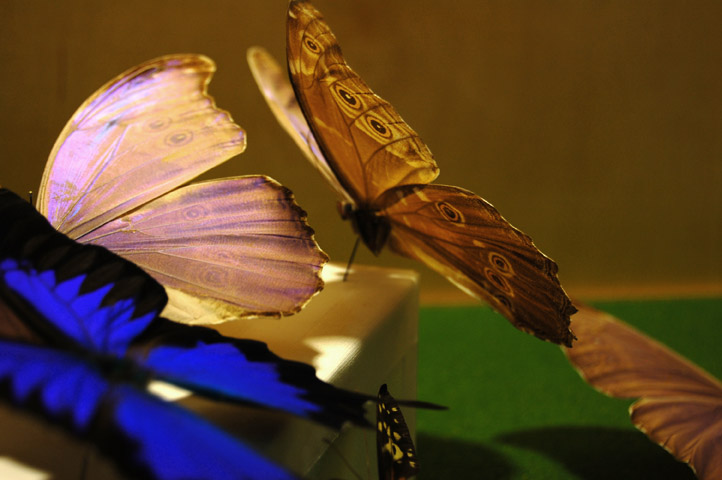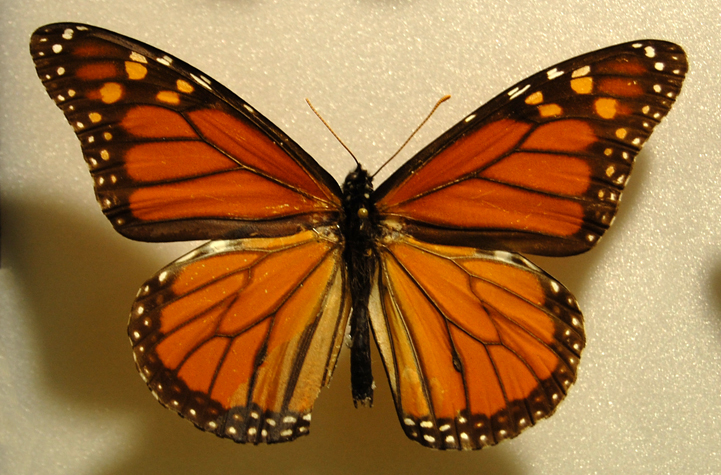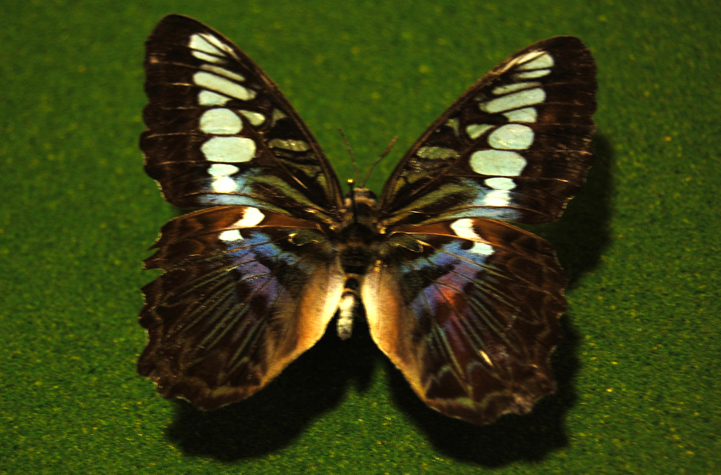Sixty years ago Ryerson’s men’s varsity teams were called the Ryerson Rams. Why the ram? One theory is the school’s namesake, Egerton Ryerson, was born on March 24, 1803 – the ram in the zodiac. Aries the ram is described as an extrovert with energy, assertiveness, a competitive nature and while courageous, impulsive and stubborn.
We all know our beloved Eggy. We see him at school events. Not so long ago, in the near-distant past of 1961, Eggy had a, shall we say, realistic look. Four students from the Student Administrative Council, wanting to boost school morale, acquired a ram for a reported $25 from the Toronto Stockyards. The little ram, decorated with Ryerson pendants and ribbons made his grand debut at a Varsity Arena hockey game with Waterloo University. Ryerson subsequently won the game, the little ram became a hero, and the rest is history.
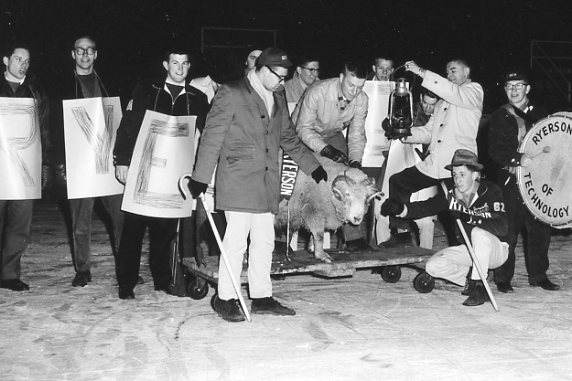
Then, as today, Eggy attended celebrations, sporting, and parade and picnic events.
There were a total of five real ram mascots between 1961 and 1991. Eggy I lived on campus during the school year in a pen and shelter behind Oakham House (then called Kerr Hall) and spent the summer on a farm outside the city. Eggy II did the same until the mid 1960s. From that time, Eggy II through V lived on a farm year long and was transported to campus for events.
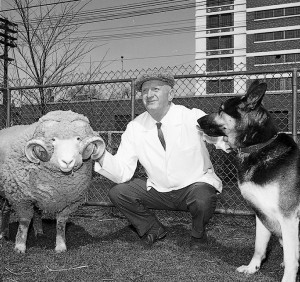
Eggy III was known to be a little ornery, charging bales of hay, fence posts, his handler, and just about anything in front of him.
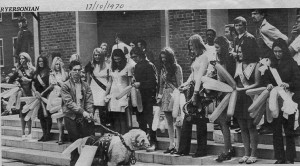
Eggy IV is reported to have been gentle and willing to pose for photos.
Eggy V was the last live mascot. He died in 1991. The Human Society pressured universities using live animals as mascots to stop the practice due to cruelty.
While the real Eggy was still making appearances, Athletics and Recreation had a costumed Eggy from about the 1980s. Possibly the first costumed Eggy – we’ll call him Costumed Eggy 1 – had a triangular nose and had developed floppy horns.

1989 – 1997 : An Eggy to be proud of – Costumed Eggy 2 – Note his heart-shaped nose with hoofed hands and feet.
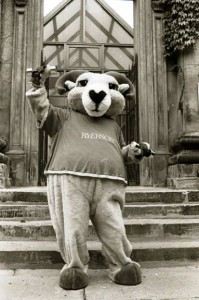
1997 – 2004 : Costumed Eggy 3 had an upward sweeping, sharp-cornered nose with hoof hands and running shoes.

2004 – 2011 : Costumed Eggy 4 had a distinctive nose outlined in grey/silver and flatter sitting horns.
2011 – present : Costumed Eggy 5 – This academic year started with a new look – a trimmer, fitter Eggy with two faces:
his mean face and his party face.

To learn more about Eggy and other Ryerson history facts visit Archives and Special Collections on the 4th floor of the Library.
